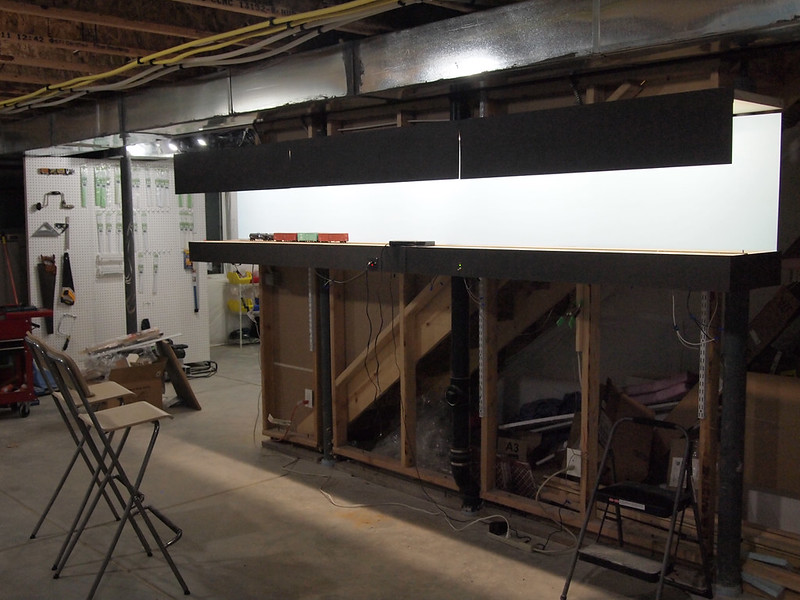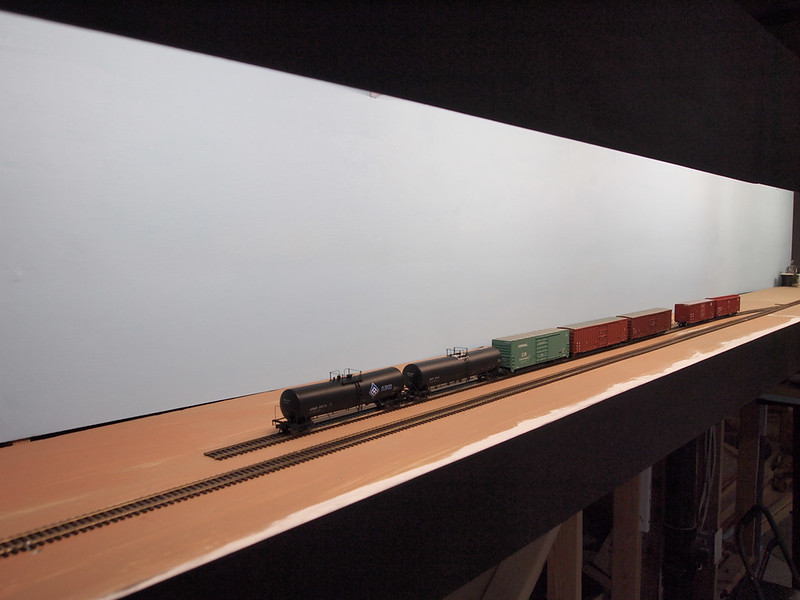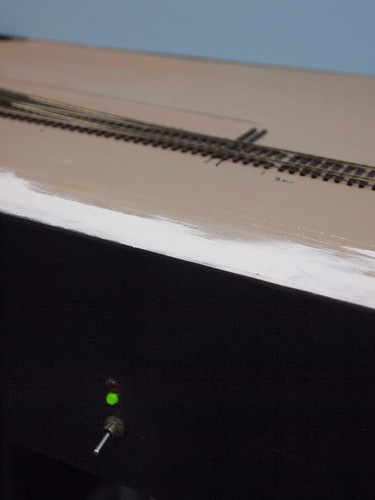Tony Koester starts off Model Railroading from Prototype to Layout with a thought that struck me the first time I read it,
"Use extreme care when drawing a line in the sand that represents a goal, as it may instead become a barrier to even greater progress and knowledge. Besides, such lines tend to be erased over time, leading on to wonder why such a restriction was created in the first place."
What I didn't realize at the time was how significant this would become for me.
The Backstory
As with most model railroaders, a train set found it's way into my life when I was a child. I had an oval loop under my bed for years growing up, but upon entering high school such things faded away for a while. I re-entered the hobby 5 years ago and was instantly captivated by narrow gauge. The whimsical, freelanced approach instantly struck a chord; after all I had been an art major for a few years in college and identified with the "self-expression" nature that often comes with a narrow gauge layout and scratchbuilding.
I had grown up looking through such books as "HO Narrow Gauge Railroad You Can Build" by Malcom Furlow or "How to Build Model Railroad Scenery 2nd Edition" by Dave Frary (which included many shots of his fabulous HOn30 freelanced C&DR).
Over the last 5 years I tried most narrow gauge scales that are out there (and even made up a few): Nn3, HOn2, HOn30, HOn3, Sn2, Sn3, Sn42, On18, On20, On30, 1:35n2, 1:37n20, Fn2, Fn3, 7/8n18, 7/8n2. I have a model railroad chest of drawers which literally has parts from all those scales in it. The problem was I would rarely make it past a project or two before it would fizzle. Sure, I scratch built some fun buildings. And I started built a few layouts/modules ( 1, 2, 3, 4). But none of them got traction. Something wasn't clicking. I was quite an experienced benchwork builder and a completely inexperienced model railroader.
In 2010 I began to discover the idea of model railroad operation. This was a sweet and sour episode as there is a lot of information being published in the model railroad press about operation, but it's extremely difficult to figure out how that applies to narrow gauge railroads. The conflict between operation and narrow gauge lead me down a road of constant doubt about what I was doing. Is what I was planning to build operationally correct for something that happened 115 years ago and the only proof we have is a few remaining photos? I had no idea.
The Bad Ideas
During this time I was pursuing a narrow gauge layout however I began to develop some bad ideas. Looking back I can see that they were bad now, but at the time I didn't think they were.
- Standard gauge railroads are boring and uninteresting
- I can't build a layout unless I spend $15,000 on fully finishing my basement
- Everything on a "real layout" is scratchbuilt. Everything.
- In a "real layout" the train "goes somewhere" (meaning the layout should be at least 90 ft² to be interesting)
These ideas, of course, set the stage for massive frustration.
The Frustration
I got close to giving up a few times. In October 2011 I wrote a blog post titled, "The Trains Have to Run" which I think was a key moment for me. Here's an except to give you the general flavor:
"I have come to the conclusion, perhaps at least for myself, that one requirement stands above them all:
The trains have to run.
HAVE TO.
Nothing makes me more angered with model railroading than when the trains don't run. This includes standing there silent on the track, not starting when I said "go", starting when I said "go" but doing so in a jerking motion, WHEN THE SOUND CUTS IN AND OUT (oh my gosh, don't get me started), sputtering, running for 30 seconds then unexplainably stopping and not responding to anything, and generally anything that resembles not doing EXACTLY WHAT I JUST TOLD YOU TO DO!"
I'm sure many of you can identify with the sentiment. If you've ever run steam engines (particularly those offered by a certain man of Bach) I'm sure you understand. And if you've ever tried to get HOn3 engines working well through turnout and crossing frogs I'm really sure you understand.
The problem is that my goals of having a working layout were not aligning with the layouts I was building. To be clear, by "working layout", I mean that in two senses: 1.) electrically and mechanically, things work; 2.) there is something "to do" on the layout. It's not just about trains going around an oval.
The "Difference Maker"
I had started selling off some of the more pricier pieces I had and was fully on my way to exiting model railroading after 5 years of more or less failure. I don't remember why or how, but I ended up on Lance Mindheim's blog.
Lance's perspective on entering the hobby is different than I've typically encountered. There were two things that I instantly identified: 1.) Lance has turned the idea of "keep it simple" into an art form; 2.) All his beginner layouts focus on real operation with a real prototype.
I had seen beginner books and articles before. You know this story, right? It's a 4x8 with an oval loop of some no-name, transition era railroad with a spur on either leg of the oval going off to some generic industry that no one gives a crap about. I've never been interested in those.
The most impressive thing I read on Lance's blog were two posts from September. One titled "A One Turnout Layout" and the other "How to 'Play' With Trains." These posts defied everything I had come to believe about model railroading. In it Lance used a screenshot from google maps to show a real, prototype spurs. He then describes all the intricate details about how the prototype would have used these spurs, and how it would be operated on a model railroad layout.
For contrast, I had spent hours designing layouts to fill a 14'x20' space and not come across the amount of "operational understanding" that I got from these two simple layout that only had one turnout.
The New Start
So I built a layout with 1 turnout.
I threw everything I had come to believe about model railroading out the window and built something that was the exact opposite of the previous 5 years.


I've learned some things.
The Result
The moral isn't that narrow gauge is evil. Let's clear that up. I really like narrow gauge and there are some amazing narrow gauge layouts built by amazing people who have more patience, time, and money than I do. In fact, in another decade once I have the skills and resources built up to do so I might take another shot at a narrow gauge layout. But that's a problem for "future me".
I've had a few "firsts" with this layout so far and made a lot of interesting observations.
This is the first layout in which I've finished everything enough to make it a completely "working" layout. The benchwork is done. The backdrop and lighting are done. All the track is installed. All the track is wired and actually works. The turnout control mechanisms are all installed and working. The thing actually works. That's incredible. I have a model railroad layout for the first time ever.
Since the whole thing was built in the basement, my wife hadn't actually seen it at all. She knew I was building something but I didn't show it to her until after it was built. The first word out of her mouth upon seeing it was, "wow". Again, another first.
Thirdly, after I had built the whole thing, I had this crazy moment of realization, "wait a minute, all the 'necessary stuff' is done. I can now do all the fun unecessary stuff." That was defiantly a first. I installed a tortoise switch machine with lights on the fascia to indicate turnout position. Totally pointless on a layout with only one turnout, but hey, why not? I actually, for the first time in years, was like "hey, this is fun again".

What I think the takeaway here for other is, make sure you have a good alignment of goals and prototype that match your skills, time, budget, and space. A mismatch of these will be years of spinning your wheels. Keeping things simple early on and setting attainable goals will actually get you to where you want to go.
So now I'm off in the crazy new world of modern, standard gauge railroading. I have a sweet SW1500 on it's way to me right now that will serve as my primary power. And I've opened up a whole new set of doors as to the possibilities of why model railroading can be fun again...
..even if I found out I was wrong in the process.